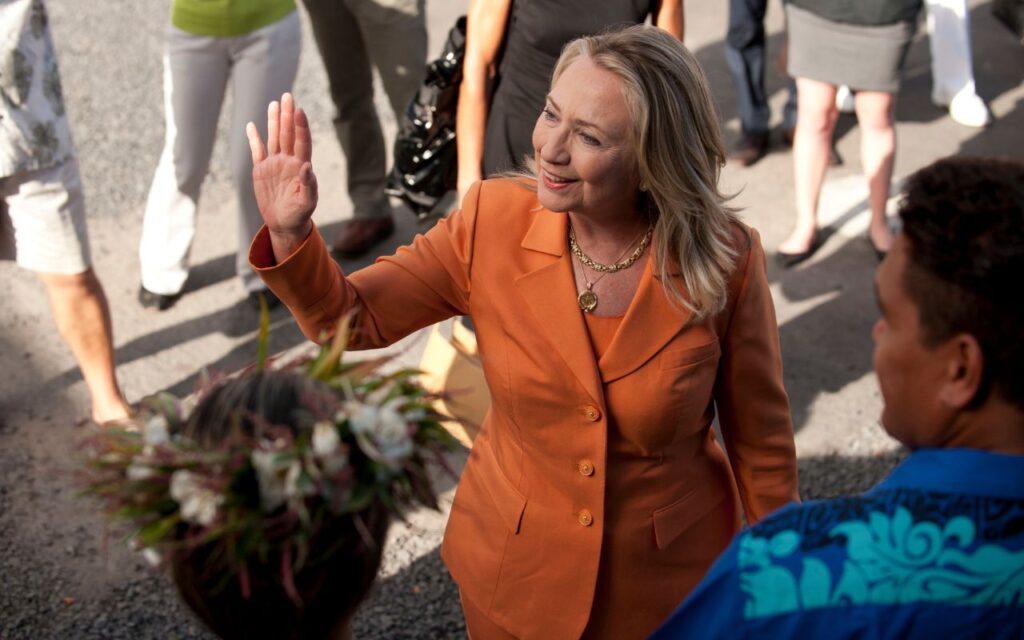
In 2000, I became what amounted to a fully clothed version of a Sunshine Girl.
For those who don’t know what a Sunshine Girl is, here’s a brief overview: it’s a feature in the Sun chain of newspapers which showcases partially clad women accompanied by descriptions like “Jenny is a Pisces, loves the Blue Jays, and just can’t get enough of frolicking with puppies.” And while I just made that description up, it’s actually tamer than some of the real ones. You get my drift.
So, why did I end up in the pages of the Toronto Sun? Well, I was young, female, and on the campaign trail with my dad during a Canadian federal election, and thus, I was an anomaly.

I was a bit baffled by the almost daily feature, but my reaction paled in comparison to that of the poor journalist — the late Mark Dunn — who was assigned to write each piece, which included various photographs of what I’d worn that day, described if my hair was up or down, and detailed things like whether I had worn my poppy over my heart or on the neck of my sweater. (This actually happened — there was a controversy because I was wearing a leather coat for warmth and could not put the poppy through the leather, so I put it on the neck of my sweater. Some members of the public were deeply offended.)
Mark, a senior national reporter, was not impressed with an assignment that was very clearly beneath him, but we both made the best of it. Looking back, I remember thinking that this focus on my clothes and hair was bizarre and silly, but I was not particularly annoyed or frustrated. I believe this is because women have become accustomed to being judged on their looks, not their brains or their accomplishments.

Par for the political course
Granted, at 23 years old, my accomplishments were limited. However, Kamala Harris’s achievements are not limited, and she still faces regular criticism for her clothing choices. Do a quick Google search of “Kamala Harris clothing choices” and see what comes up. And while you do so, remember that this is the Vice President of the United States of America. A woman who is running to become President of that country and not of the Council of Fashion Designers of America.
And it’s certainly not limited to Kamala Harris. Former Prime Minister Kim Campbell created a furor when she posed for her official portrait with bare shoulders. Hillary Clinton was regularly mocked for her pantsuits — or worse yet, criticized for the look of her ankles when she did NOT wear a pantsuit. And European Central Bank president Christine Lagarde has been profiled in numerous global publications for her “sartorial elegance” or her well-placed use of a scarf. These are just a few examples — there are thousands more — but they are gender-specific.

How many articles do you see every week about the fashion choices of our male political leaders? Sure, there’s been a lot of speculation lately about Donald Trump’s shoulder pads. And many people have spent time they’ll never get back wondering why any man would wear his tie so long. But it’s not the same thing.
The truth is that women continue to face the vast majority of criticism, scrutiny, aggression, and commentary about their looks. Ask any woman in public life and she will almost certainly tell you that most of the comments she receives from members of the public are about her appearance and not her opinions.
There’s no real immediate solution to this. As Angela Lansbury sang in Beauty and the Beast, it’s a tale as old as time. But we can each — male or female — play a role in being aware of our biases and being careful about our comments. We can force ourselves to think about whether it’s okay to pick apart a woman’s clothing choices when she walks on stage, as opposed to the policy decisions she’s proposing.
We can remember that the next woman who stands at a podium, sits down for a TV interview, or walks onto the floor of the House of Commons could be our daughter, mother, or sister. She deserves to be respected for her brains and contributions, not for the clothes she decides to wear.
We can remember that equality comes in all shapes, sizes, colours, hairstyles, and heel heights. And we can focus on what matters: ensuring that qualified, engaged, intelligent women are just as empowered to get to the top as anyone else.








